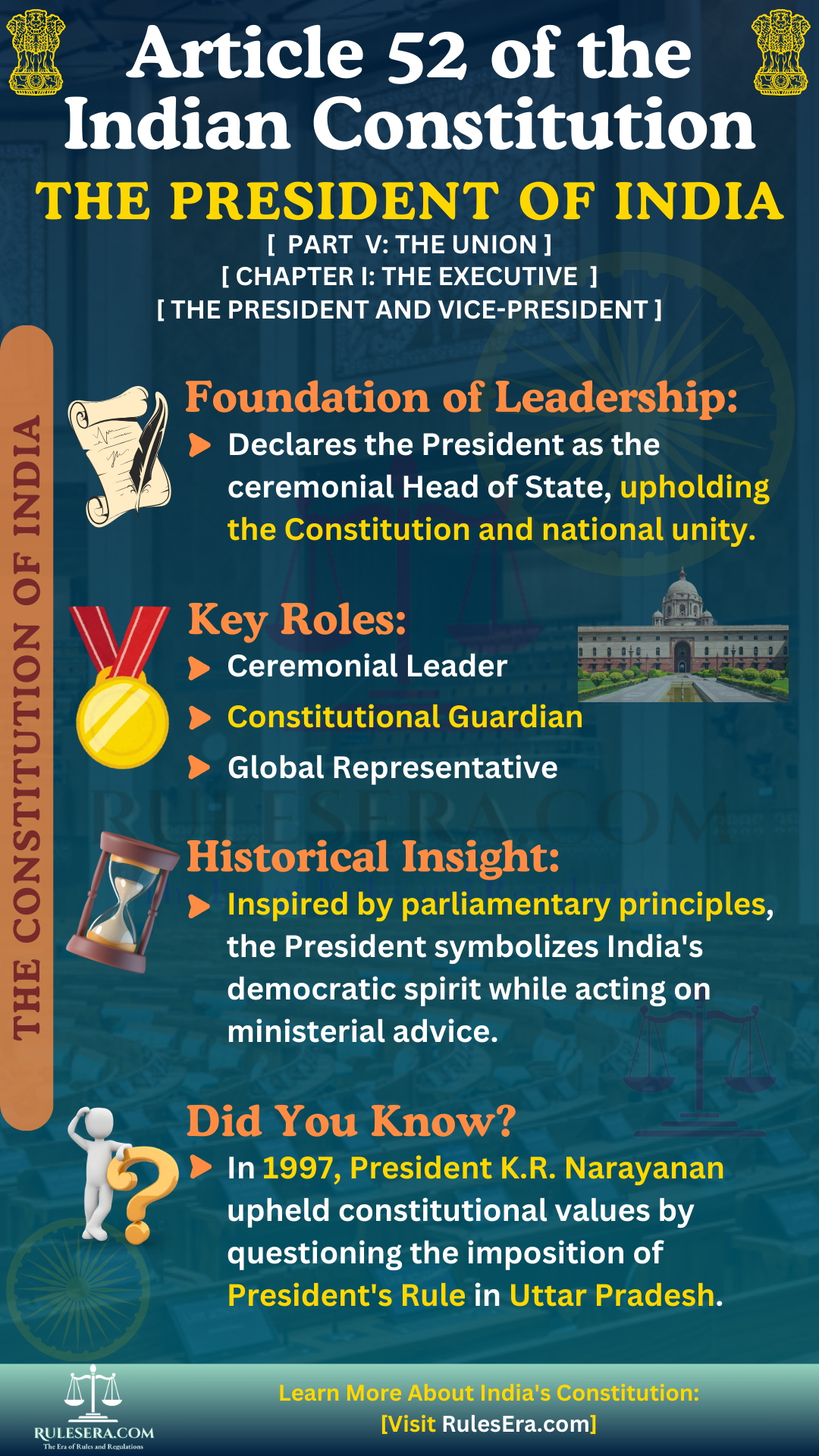Part V: The Union
Chapter I: The Executive
The President and Vice-President
Article 52: The President of India

--- Original Article ---
There shall be a President of India.
Explanation
Article 52 of the Constitution of India serves as the foundation for the highest constitutional office in the country—the President of India. As the formal head of state, the President represents the unity, integrity, and sovereignty of the nation, while serving largely a symbolic role within the framework of the parliamentary system of government.
Key Provisions
- Formation of the Office of the President: "There shall be a President of India." This simple declaration creates the highest executive office in India, though the President acts on the advice of the Council of Ministers.
- Functions and Powers of the President: The President's specific duties are outlined in subsequent articles like Articles 53 and 74, but Article 52 establishes the position as a cornerstone of the executive branch.
Amendments and Real-Life Examples
- Constitutional Amendments and Judicial Clarifications: The 42nd Amendment Act of 1976 confirmed the President's duty to act on the advice of the Council of Ministers, reaffirming the ceremonial nature of the role.
- Real-Life Example: In 1997, President K. R. Narayanan delayed the imposition of President’s Rule in Uttar Pradesh, showcasing the President's moral authority within constitutional limits.
Historical Significance
The office of the President was a key step towards India’s republican government, moving away from colonial monarchy and ensuring a symbolic leader who preserves the unity of the state. The President’s role emphasizes the importance of the Constitution as the highest law of the land.
Legislative History
Article 52, originally drafted as Article 41, was debated and incorporated into the Indian Constitution after discussions on November 10, 1948.
Debates and Deliberations
During the Constituent Assembly debates, Professor K. T. Shah proposed substituting the text to clarify that "The Chief Executive and Head of the State in the Union of India shall be called the President of India." This distinction highlighted the difference between the ceremonial head (the President) and the government’s head (the Prime Minister).
Mr. H. V. Kamath questioned why the term ‘Rashtrapati’ was omitted from the English draft. In response, Dr. B. R. Ambedkar clarified that 'Rashtrapati' would appear in the Hindi version and the Constitution follows a parliamentary system, not a presidential one.
Dr. B. R. Ambedkar further explained that under India’s system, the President is bound by the advice of the Council of Ministers, unlike the American President who holds independent executive powers. As a result, Professor Shah's proposal was rejected.
Frequently Asked Questions (FAQs):
The President serves as the formal head of state and performs ceremonial duties while acting on the advice of the Council of Ministers.
No, Article 52 itself has not been amended, but amendments like the 42nd Amendment clarified the President’s ceremonial role.